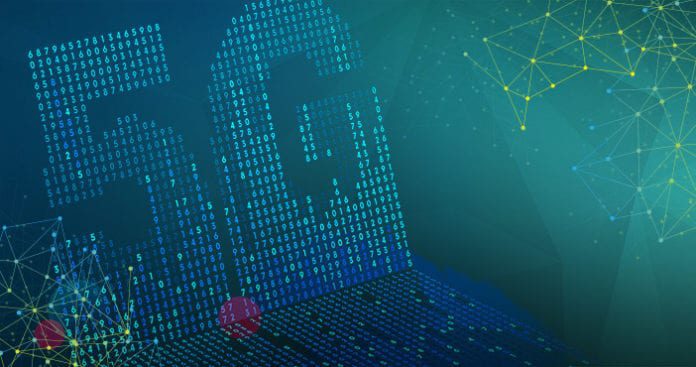Ericsson: “The performance of 5G is directly impacted by transport”
When considering 5G, the current focus of industry discussion is largely on radio access –certainly a key element given that it connects the end user with the network. But, in addition to enhancements to the RAN, making the most of 5G requires investment in new core infrastructure as well as in the transport network, the vital link between where services are created and where they’re passed onto subscribers.
As operators go through a multi-year capex cycle to initially deploy then scale out 5G networks, transport upgrades will come in a variety of forms. Obviously fiber will retain its foundational role, but expect increased utilization of microwave backhaul to extend coverage from urban areas into suburban and rural markets.
Ultra-dense networks supporting a variety of low-, mid- and high-band spectrum combinations will be based on new architectures and interfaces. And street-level and pole-mounted installations will need to increase performance while blending in with local aesthetics. This complex network environment commands a multi-pronged approach to flexibly enhancing the transport network to fully enable 5G.
Let’s start with microwave and answer a persistent question: Does microwave have a place in 5G transport?
“Microwave is a viable solution for 5G deployments,” Ericsson Consumer Solutions Sales Director Alex Heredia explained to RCR Wireless News. “Today we have operators that are connecting the 5G radios with microwave to the network.”
He called out a portfolio that supports use cases including dense urban deployments where 80 GHz microwave links can support speeds of 10 or 20 Gbps; event-specific deployments where there’s a need for a localized boost to backhaul capacity; and in disaster-recovery situations where mobile cell sites are used while the primary network is repaired.
“Fiber is the preferred choice however fiber is not always available at the right price at the right time,” Heredia said. “Microwave becomes a complement solution that becomes readily available when the operators need it.”
For more information, watch “Is microwave ready for 5G?”
As operators look to scale 5G coverage from urban pockets into suburbs and beyond, Ericsson has developed a multi-band booster to facilitate the use of higher frequencies over longer distances and wider areas. The combination of a low-band radio provides a high-availability connection which is combined with a higher band to provide an increase in capacity.

Ericsson’s Michael Gronovius laid out four challenges associated with 5G and explained how those challenges are linked to new requirements for transport networks:
- New spectrum, millimeter wave frequencies for instance, equates to the need for basebands to deal with more capacity.
- Split architectures and CPRI interfaces mean cell site routers have to handle different types of data traffic and assign the appropriate quality of service profile.
- Providing bespoke network slices, a major feature of 5G with a direct line to service monetization, is an end-to-end process involving core, RAN and transport.
- Because 5G NR using millimeter wave bands has very stringent time and phase synchronization requirements, the mobile backhaul network must provide synchronization backup and distribution.
From a product perspective, Ericsson developed its Router 6273 to meet the heightened capacity and architectural demands of 5G. The new unit is 3 RU high and comes with 100 GE, 25GE and 10GE high port density.
“With 5G,” Gronovius said, “you get new spectrum. In addition to that, you have new architectures with new interfaces. If you’re going to get more radio spectrum, it translates into that the basebands which are deployed are going to have to deal with more capacity. So if you’re going to reuse that same cell site router, you’re going to choke out that baseband and you’re not going to get the full 5G performance.”
For more information, watch “How is 5G impacting the mobile backhaul network?”
The increased density, spectrum mix and architecture of 5G networks compounds existing challenges–space, power and connectivity, that operators face as they work with cities and towns to install street-level and pole-mounted network infrastructure.
“For our operators, they’re still faced with the same challenges as deploying their mobile networks, just at a greater extent,” Ericsson’s Charles Ribordy, customer solutions sales manager, said. “5G actually places additional demands for fiber connectivity based on mid-band massive MIMO radios as well as millimeter wave high-band radios. The other challenge, as they deploy these solutions at street level or on poles, the need for concealment to support municipality zoning and permitting is key.”
Optical fronthaul is a primary element in centralized RAN architectures wherein baseband units are co-located in one location then connected to remote radio units serving a larger area. This approach allows for centralized management of network and spectral resources for more dynamic response to shifting capacity demands.
Ribordy explained the distinction between active and passive fronthaul. For street-level deployments, passive fronthaul comes in a smaller form factor which equates to better concealment and has a lower total cost of ownership. Active fronthaul is a good option for operators relocating baseband units from towers to baseband hotels.
For more information, watch “Overcoming deployment challenges in 5G networks”
“The performance of 5G is directly impacted by transport,” Gronovius said. He noted that Ericsson takes a systematic approach that simultaneously considers radios, fronthaul, backhaul, midhaul and microwave. “They’re all aligned.” And given the company’s leadership in the 3GPP process, “We actually help drive standards. We know the requirements which are coming up and based on that we translate the features in our products.”
To learn more about Ericsson’s approach to transport, check out the following materials:

